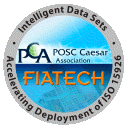| Version 1 (modified by jbourne, 16 years ago) |
|---|
TracNav menu
-
RDS/WIP project
- RDS/WIP Introduction
-
RDS/WIP World View
- Models, Data & Meta-Data
- Paths to Interoperability
- Automated Mapping
- Thought and Language
- Coarse to Fine
- Fine to Coarse
- Template Methodologies
- Choice of System
- Conclusions
- RDS/WIP Sample Queries
- RDS/WIP Staging Diagrams
- RDS/WIP 1.0 Plan
- RDS/WIP 1.0 Testing
- RDS/WIP 1.0 Process
- RDS/WIP 1.0 Inventory
- RDS/WIP 2.0 Plan
- RDS/WIP ID Generator
- RDS/WIP Domain Proposal
- RDS/WIP Requirements Table
- RDS/WIP Use Case: Discrete Editing
- RDS/WIP Use Case: CSV Upload
- RDS/WIP 1.0 General Use Cases
- RDS/WIP 2.0 General Use Cases
- RDS/WIP ISO 15926 Template Definitions
- RDS/WIP OWL/RDF Definition
- RDS/WIP OWL/RDF Project Plan
- RDS/WIP Forums
-
External
- RDS/WIP Use Case: Bulk Upload

POSC-Caesar FIATECH IDS-ADI Projects
Intelligent Data Sets Accelerating Deployment of ISO15926
Realizing Open Information Interoperability
Template Methodologies
N-ary relations, that is "templates" in ISO 15926 parlance, can be defined using a wide variety of different approaches. When such an approach takes the form of a systemic process, we call it a "methodology".
The Purpose of a Methodology
The likelihood of two different templates working well together in any given scenario is much higher for those templates that have been generated using the same methodology.
In general this is the very purpose of a methodology: to create a set of templates that work well together to solve some interoperability problem.
Retain the Record of Methodology
Because multiple methodologies can be used to create definitions in the same modeling system, it is crucial to record the methodology that created a definition, and any other methodologies it has been proven for.
This allows the selection of a cogent, orthogonal set of definitions to solve a specific interoperability problem using a given modeling system. That is to say, the intersection of modeling system and methodology together select the working set of definitions.
Top-Down Approach
@todo describe
Bottom-Up Approach
@todo describe
The Reach of a Methodology
Top-down approaches have a tendency to be more neutral to a modeling system - the shallower the top-down approach, the more neutral it tends to be. This allows very shallow top-down methodologies to be applied across different systems.
Bottom-up approaches are (by definition) founded on a specific modeling system, and so bottom-up methodologies are generally confined to a single modeling system.
@todo notes to incorporate/explore
The distinction I wanted to make is that from my point of view, templates as a term in 15926 need to include at least two extremes, and everything in else between them.
I see these two extremes as being templates produced with a top-down process, where you start essentially with the template and then figure out what it really means by breaking it down into smaller and smaller relationships; and then templates produced with a bottom-up process, where you start with binary relationships and work your way up, generating coarser and coarser templates.
Very simplistically, when you take a linguistic approach to defining templates, you are using a top-down approach; when you take a usage approach to defining templates (eg. from existing spreadsheets, datasheets), you are also using a top-down approach; but when you use a formal logical approach to defining templates, you are using a bottom-up approach.
It is my *belief* that linguistic templates and usage templates are the fastest to develop, but with the caveat that when working in a collaborative, distributed effort to produce them, they are unlikely to "fit" well with eachother, instead, resulting in little "cultures" of related, relatively well-fitting templates that do not address the needs of disciplines or environments that they were not generated from - ie. poor fit to other "cultures".
It is also my *belief* that bottom-up approaches to templates are slower to develop and more costly to map to, but they result in models that retain a higher level of precision across disciplines and they can be produced as a cohesive set in a distributed, collaborative effort (because you have to build from smaller, existing, published blocks). You can still get cultures forming, but at least they will have at their root a common basis.
